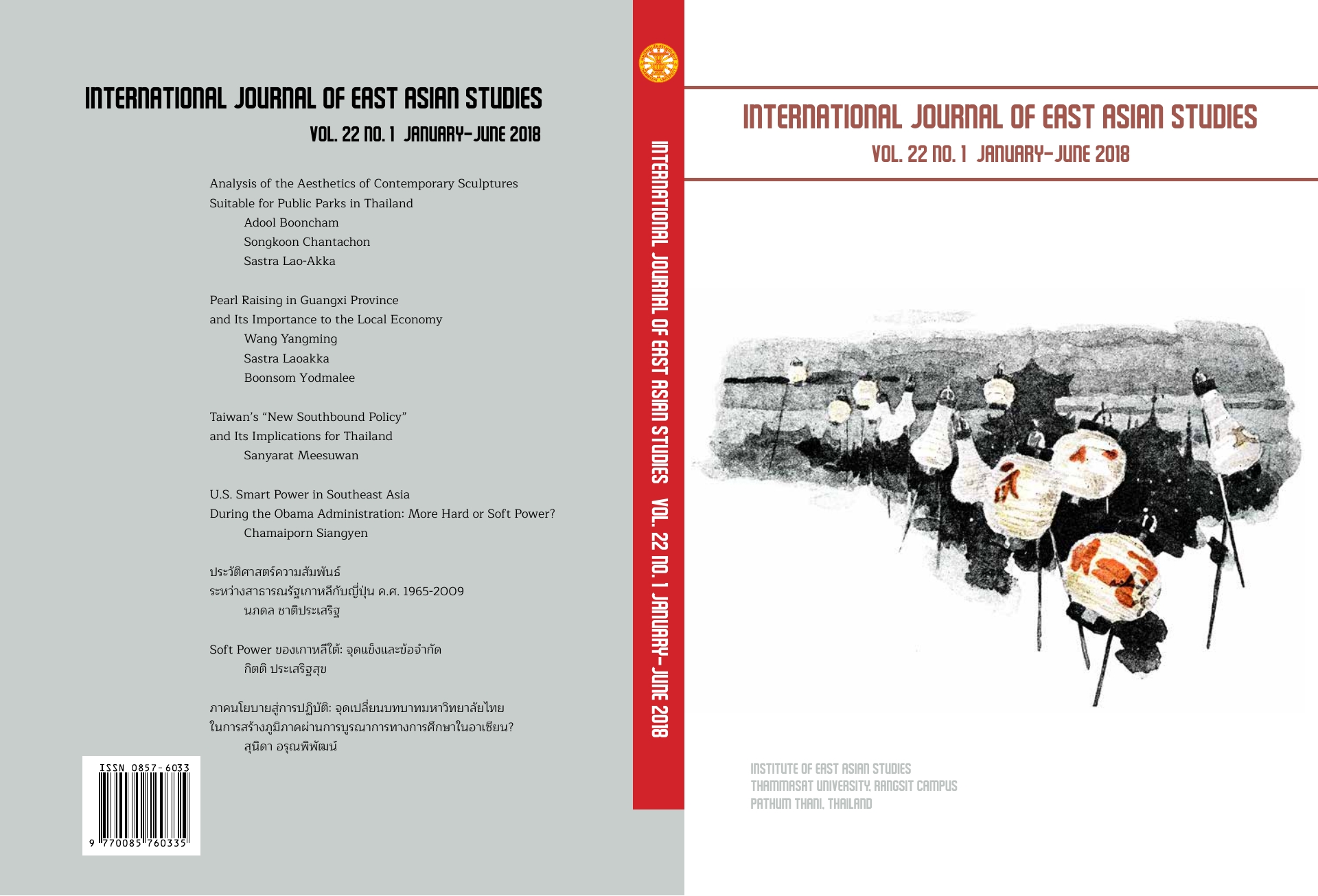Taiwan’s “New Southbound Policy” and Its Implications for Thailand
DOI:
https://doi.org/10.14456/ijeas.2018.3Keywords:
New Southbound Policy, Taiwanese Dream, Taiwan-China-US relations, Thai foreign policyAbstract
Aimed at understanding the New Southbound Policy’s motives and its chances of success, this research employed James Rosenau’s Linkage Politics and Theory of Change and Continuity, and Robert Putnam’s Two-level Game Theory as the principal analytical tool. Exploring the interconnections between Taiwanese government and domestic interest groups, it finds President Tsai Ing-wen’s New Southbound Policy has been designed primarily to help boost Taiwan’s economy, while substantially reducing economic reliance on China; and that ASEAN members toward the south are among the target countries. However, whether or not her New Southbound Policy will achieve its objectives depends in large measure on the direction of current development of relations between the US and China, particularly the on-going tensions and uncertainties between these two countries and their principal allies in and around the South and East China seas, and on the Korean Peninsula. As a target country of Taiwan’s New Southbound Policy, Thailand—herself in dire need of boosting the national economy, while laying a sustainable internal security and political structure for the foreseeable future—simply cannot ignore Taiwan’s initiative. Meanwhile, she cannot overlook China’s intense concerns in regard to strategic, political and military maneuverings of the US and allies in the South and East China seas. It seems logical that Thailand would choose to respond positively to the economic aspect of Taiwan’s New Southbound Policy, while maintaining a “non-intervention position” on the politics of Peking-Taipei ties.



